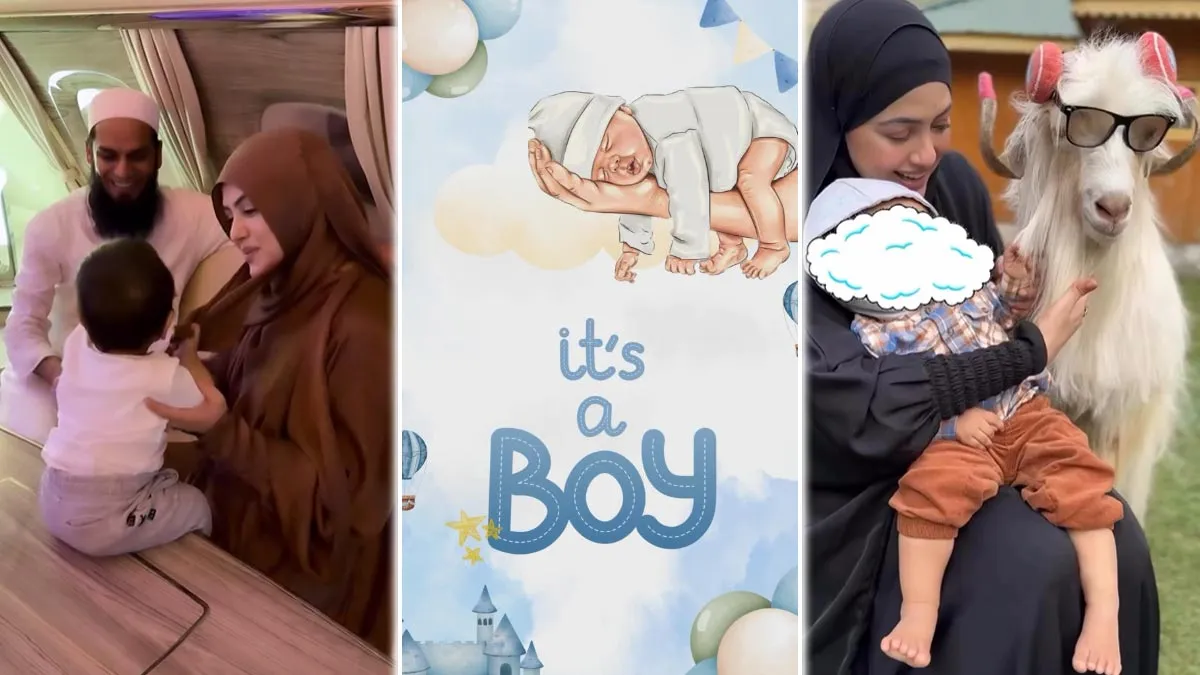
Sana Khan, the former actress and reality TV star welcomed her second son. This joyful news comes just 18 months after the birth of her first child named Tariq Jamil. Sana shared her happiness on social media, expressing her gratitude for the blessings of motherhood. Along with her husband, Anas Saiyad, she is thrilled to embrace this new chapter in their lives.
Sana Khan's second baby name has not been revealed as of now.
Table of Content:-
Having two children so close in age can be both a challenge and a joy. Many parents wonder about the ideal gap between siblings. Is it better to have them close together or spaced out? Our expert, Dr Astha Dayal, Gynecologist and Obstetrician, CK Birla Hospital, Delhi, explained the short gaps and the moderate gaps.
View this post on Instagram
What Is The Ideal Gap Between First and Second Baby?
Dr Astha Dayal, Gynecologist and Obstetrician, CK Birla Hospital, Delhi shares the ideal gaps that parents should consider before having a second baby. A short gap of less than two years can create a close sibling bond, as children often grow up as best friends and share milestones. On the other hand, a moderate gap of two to four years allows for better maternal recovery and enables parents to give individual attention to the newborn while the older child is more independent.
Below are the benefits of a short gap between babies (less than 2 years)
- Closer Bond: Siblings born close together often develop strong friendships, sharing milestones and interests.
- Efficiency: Parents are already in the parenting routine, making the transition to two children smoother.
- Faster Career Return: Having kids close in age can help consolidate parenting years, allowing parents to resume work or personal goals sooner.
Below are the challenges of a short gap.
- Physical Recovery: Mothers may face health risks if they conceive before fully recovering from the first pregnancy.
- Increased Stress: Managing two young children can be exhausting, as both require constant attention.
- Financial Strain: Overlapping costs for diapers and childcare can burden household finances.
Below are the advantages of a moderate Gap (2 to 4 years)
- Improved Maternal Health: This gap allows for full recovery, reducing risks in subsequent pregnancies.
- Individual Attention: The older child’s increased independence lets parents focus more on the newborn.
- Balanced Dynamics: The older sibling is better equipped to understand their new role, fostering cooperation and minimizing jealousy.
Ultimately, the decision on spacing should be tailored to each family's unique circumstances. Factors such as parental health, financial stability, career aspirations, and personal preferences all play a significant role in determining the best age gap between siblings.
Is There Any Effect Of Having Children With A Small Age Gap?
According to a study published on PubMed, having children with a small age gap can have significant long-term effects on both parents and children. The study indicates that mothers who conceive less than 18 months apart face increased health risks, including a higher likelihood of chronic conditions such as diabetes and arthritis later in life. This is attributed to the physical toll of rapid pregnancies, which may prevent adequate recovery and deplete essential nutrients necessary for maternal health and fetal development.
For children, closely spaced siblings may experience developmental impacts. Studies suggest that short birth intervals are associated with poorer outcomes in areas like school readiness and cognitive development. However, the dynamics of sibling relationships can also be positive, as closely spaced siblings often share experiences and develop strong bonds.
Takeaway
Choosing the ideal gap between the first and second child is a personal decision. A short gap of less than two years can create a strong sibling bond and ease transitions for parents. However, it may also lead to increased strain on mothers and financial pressures. A moderate gap of two to four years allows for better recovery and individual attention for each child. This can promote healthier family dynamics. Ultimately, families should consider their unique circumstances, including health, finances, and personal preferences, to find the right balance that supports everyone’s well-being.
Also watch this video
How we keep this article up to date:
We work with experts and keep a close eye on the latest in health and wellness. Whenever there is a new research or helpful information, we update our articles with accurate and useful advice.
Current Version